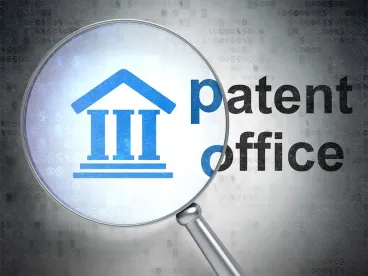Overcoming anticipation assertions is a hurdle many patent owners face, both at examination, and later when challenged at the PTAB. Merck Sharp & Dohme Corp. (“Merck”), however, recently overcame a challenge of inherent anticipation by Mylan Pharmaceuticals (“Mylan”) by relying on the complexities of chemical salt formation.
The patent at issue, U.S. Patent No. 7,326,708 (“the ’708 patent”) claims a “1:1 sitagliptin DHP,” a salt comprised of “one phosphate anion” in conjunction with “one sitagliptin amine cation.” DHP is a dipeptidyl peptidase-IV inhibitor used to lower blood sugar and is the primary ingredient in Merck’s Januvia drug for Type 2 diabetes.
Filing IPR2020-00040 in October of 2019, Mylan sought to render claims of the ’708 patent unpatentable on grounds of anticipation, inherent anticipation, and obviousness. While the PTAB methodically walked through each of Mylan’s arguments, this article, Part 1, focuses on Mylan’s unsuccessful inherency arguments. Part 2 will focus on Mylan’s equally unsuccessful obviousness arguments.
In asserting inherent anticipation, Mylan primarily relied on WO 03/004498 (“the WO ’498 publication”) as anticipatory prior art. WO ’498 is also owned by Merck. WO ’498 claims peptidase-IV enzymes, or DP-IV inhibitors, used to treat high blood sugar. Mylan Pharms. v. Merck Sharp & Dohme Corp., IPR No. 2020-00040, at 16 (P.T.A.B. May 7, 2021).
Mylan asserted that the WO ’498 publication taught a 1:1 phosphoric sitagliptin salt by disclosing two “closed lists.” Id. at 20. Mylan argued that one list included sitagliptin as one of 33 potential compounds, and another list identified phosphoric acid as one of eight preferred acids. Mylan claimed that a person of ordinary skill would see these two closed lists, know to combine the two compounds, and, similar to the chewing gum combination in Wrigley, create the 1:1 sitagliptin DHP claimed in the ’708 patent.
In response, Merck distinguished Mylan’s “combination lists” argument. Merck urged that a list-based analysis under Wrigley was incorrect regarding the ’708 patent. In Wrigley, the Federal Circuit found anticipation because two chewing gum components, the flavoring agent and the cooling agent, were both disclosed in the prior art in closed lists as “preferred agents,” and therefore a person of ordinary skill would have thought to combine them to create the claimed product. Here, to create the 1:1 sitagliptin DHP, a skilled artisan would not only have to combine the sitagliptin and the phosphoric acid, but they would have to obtain an exact 1:1 stoichiometry ratio, which the prior art did not teach. Merck asserted that salt formation in the ’708 patent was far too unpredictable and complex to rely on a simple combination analysis. Merck relied on Shire, a district court case that distinguished complex chemical reactions from the simple combination of prior art lists in Wrigley.
Merck argued that absent a simple combination argument, Mylan was left flailing, attempting to close the gap between the disclosed sitagliptin and the claimed 1:1 sitagliptin DHP. Merck urged that an “envisaging” argument only works when the “genus resulting from combining the two lists is of ‘such a defined and limited class’” that a person of ordinary skill could “at once envisage each member of the genus.” Regarding Merck’s ’708 patent, a person of ordinary skill “does not know—the genus of salts that will form,” let alone envisage the members of the genus that would result. Id. at 21.
In making their inherency argument, Mylan also relied on testing conducted by Dr. Chyall, for purposes of another proceeding, allegedly following the protocols in a disclosed example in the WO ’498 publication. Id. at 26. Mylan asserted that the 1:1 salt form of sitagliptin DHP would form “every time” and therefore the claims were inherently anticipated. Dr Chyall, however, made “at least eight changes between” his testing and the WO ’498 example. Primarily, the exchange of hydrochloric acid (disclosed in the WO ’498 publication) for phosphoric acid (the salt form of which is claimed in the ’708 patent).
Merck’s expert, Dr. Matzger, in response, explained that there is no guarantee that a 1:1 salt form of sitagliptin DHP would form every time. Id. at 24, FN 17. Dr. Matzger explained that sitagliptin has multiple proton accepting sites, and phosphoric acid can donate “up to three protons,” which means the two compounds can also form a 2:1 salt. Furthermore, Merck cited experts, including Dr. Chyall and Dr. Atwood of the University of Missouri, who had formed non 1:1 salts of sitagliptin and phosphoric acid in their testing. Merck’s counterevidence, along with Mylan’s lack of “experimental results or data to show that sitagliptin can only be mono-protonated” demonstrated that a 1:1 sitagliptin DHP will not form every time. Id. at 35.
PTAB Decision: The PTAB concluded that Mylan had “not proved inherency by a preponderance of the evidence.” The PTAB explained that an invention is inherent only if “it is the natural result flowing from the explicit disclosure of the prior art.” Schering Corp. v. Geneva Pharm., Inc., 339 F.3d 1373, 1379 (Fed. Cir. 2003). The “inherent result must inevitably result from the disclosed steps” and “may not be established by probabilities or possibilities.” In re Montgomery, 677 F.3d 1375, 1379-80 (Fed. Cir. 2012). Id. at 37.
In discussing Mylan’s reliance on Dr. Chyall’s testing, the PTAB noted that Dr. Chyall “did not adhere to the example” in the WO ’498 publication, as there was no explicit disclosure in the ’498 publication to apply the process used for hydrochloric acid to phosphoric acid. The PTAB found that Chyall’s experiment was much different than the “mere swapping” of acids,” and Dr. Chyall had to “necessarily change” the procedures disclosed in the WO ’498 to reach the desired outcome. Therefore, the PTAB noted that the prior art and technical literature “undeniably” showed that non 1:1 sitagliptin phosphate salts do exist and that the claimed 1:1 ratio will not form every time, both of which ensure the claim is not inherently anticipated. Id. at 41.
Takeaways
The unpredictability of chemical reactions and salt formations remains favorable to patent owners in their fight against invalidity/unpatentability challenges. The PTAB easily distinguished Wrigley, both under combination of lists and envisaged doctrine analyses. In particular, this case signifies a win for pharmaceutical patent owners seeking to build on their own previous research and discovering polymorphic species.
Petitioners, moreover, should be cautious in relying on bold assertions, such as “every” in their inherency arguments. Mylan asserted that the 1:1 ratio would form every time, an argument that unraveled when the complexities of sitagliptin and phosphoric acid reactions were revealed by experts on both sides.
Finally, both petitioners and patent owners should take note of the PTAB’s critique of the modified expert experimentation procedures. The PTAB found both experts, Dr. Chyall and Dr. Matzger, had modified the example procedures in such a drastic way, that an ordinary person of skill would not have thought to make those changes absent a desire to obtain a specific result. In general, it is a bad idea to rely on modified prior art experiments to attempt to satisfy the “necessarily and inevitably” requirements of inherent anticipation,.
Mylan filed an appeal on July 8, 2021. You usually don’t know what any particular panel of the Federal Circuit will do, so we shall wait and see.
Jordan Cowger, a Summer Associate at Finnegan, and Stacy Lewis, Law Clerk at Finnegan, contributed to this article.




 />i
/>i
